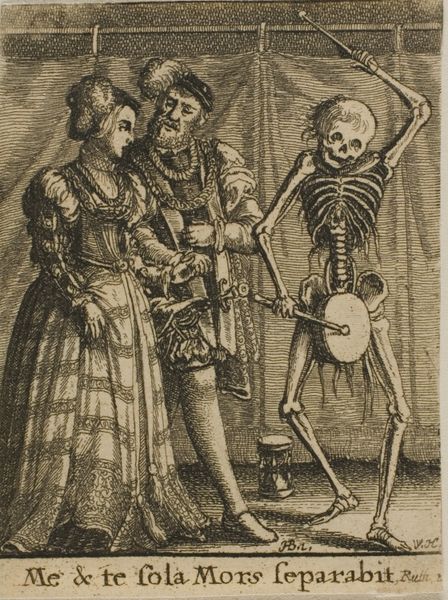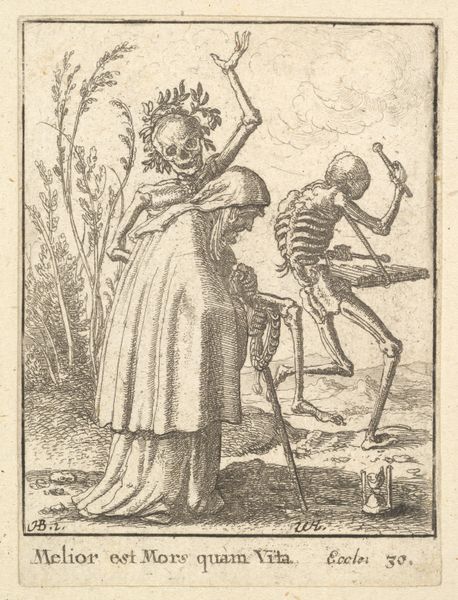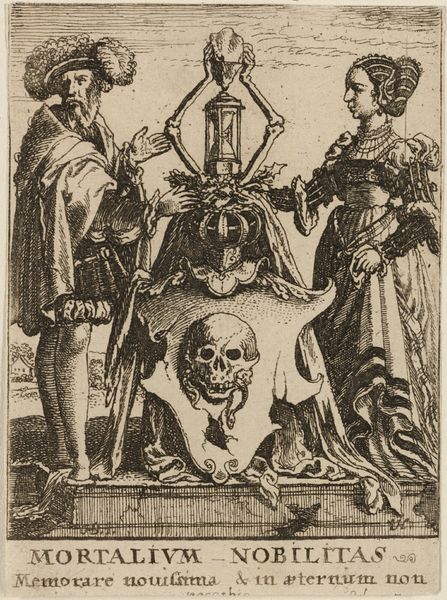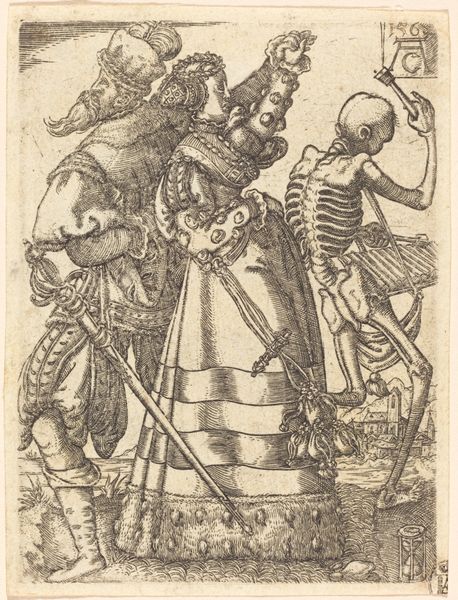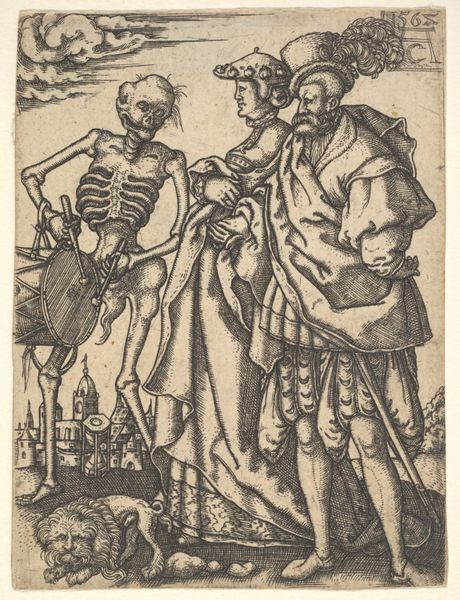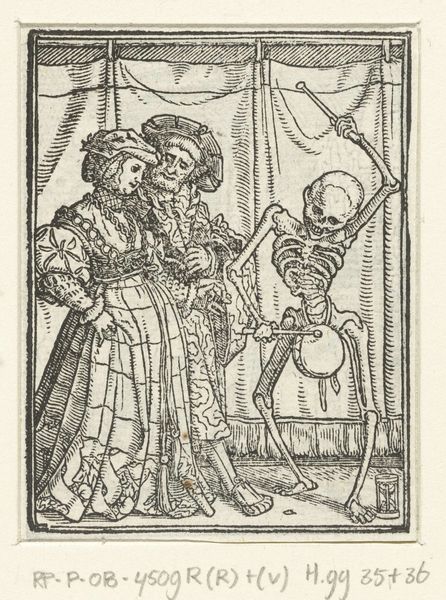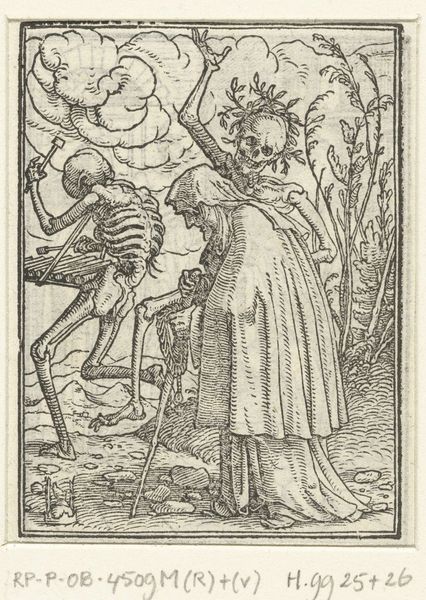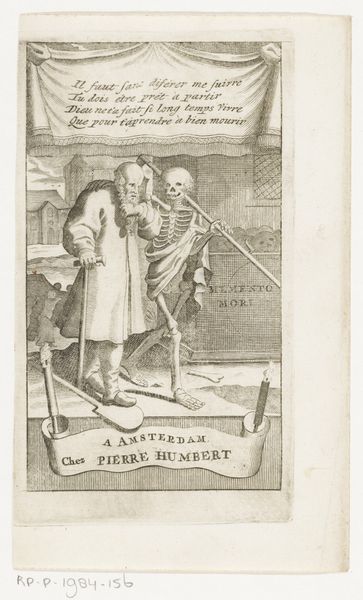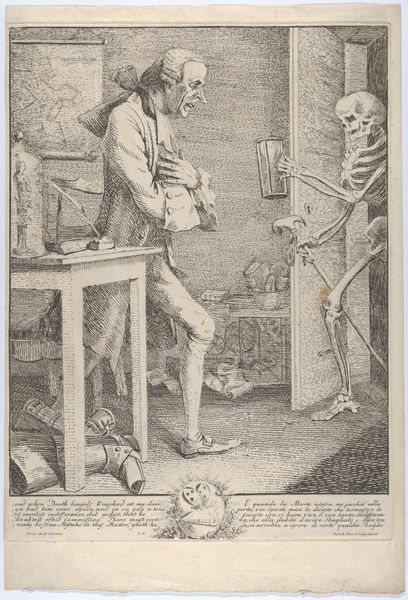
drawing, print
#
drawing
#
comic strip sketch
#
aged paper
#
mechanical pen drawing
# print
#
death
#
pencil sketch
#
old engraving style
#
sketch book
#
personal sketchbook
#
pen-ink sketch
#
pen work
#
sketchbook drawing
Dimensions: Sheet: 2 7/8 × 2 1/8 in. (7.3 × 5.4 cm)
Copyright: Public Domain
Curator: This intriguing print, entitled “Bridal pair, from the Dance of Death,” comes to us from the hand of Wenceslaus Hollar. It was created sometime between 1651 and 1800. What strikes you most about this image? Editor: Well, the skeletal figure gleefully beating a drum certainly sets a rather morbid tone, doesn’t it? The contrast between the lively couple and the stark figure of death is incredibly arresting. Curator: Indeed. The Danse Macabre was a popular motif, particularly in times of great upheaval. Images like this served as a stark reminder of the ubiquity of death, regardless of social status or earthly pleasures. It speaks to a shared human vulnerability. Editor: Absolutely. And consider how this resonates within a patriarchal system where marriage often defined a woman’s identity. Even in that supposedly secure union, death is present, acting almost as a sardonic third party to their vows. Curator: Precisely. Note also the subtle class distinctions implied by the couple’s attire, in contrast to the egalitarian nakedness of death. Hollar underscores that death equalizes us all in the end, dismantling hierarchies built upon wealth and privilege. Editor: The meticulous details Hollar captures, the textures of their garments, the hollow sockets of the skeleton, really hammer home that point, don’t they? Death doesn't discriminate; it interrupts narratives regardless of their promise or pomp. Curator: I agree. The inscription at the bottom, "Me & te sola Mors separabit," reinforces this. Ironically, it echoes the marital vow of eternal togetherness, twisted here to highlight death as the ultimate separator. Editor: In that sense, Hollar reframes marriage itself, suggesting perhaps that such societal bonds are frail in the face of inevitable mortality. A somewhat pessimistic commentary on love and society, wouldn’t you say? Curator: Perhaps, but I think it’s also an urging. An invitation to consider life’s fragility and, dare I say, live more authentically within its finite boundaries, fully cognizant of those existing power dynamics. Editor: A powerful reading. Seeing this print definitely makes one contemplate the fleeting nature of earthly constructs, urging us to question and perhaps even redefine the norms that bind us.
Comments
No comments
Be the first to comment and join the conversation on the ultimate creative platform.
